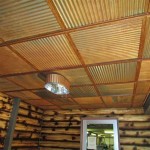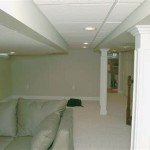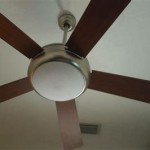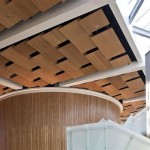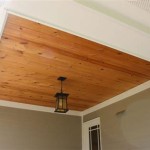Why Did Old Houses Have High Ceilings?
Exploring the fascinating architectural history of old houses reveals an intriguing feature—the presence of high ceilings. These towering ceilings, reaching up to and sometimes even exceeding 12 feet, were not merely a design whim but served several practical and societal purposes.
Practical Considerations:
1. Ventilation and Cooling: In the absence of modern air conditioning, high ceilings allowed for better air circulation. Warm air naturally rises, so higher ceilings created a natural draft that drew cooler air into the rooms. This was especially beneficial during hot summer months when keeping interiors cool was a challenge.
2. Natural Lighting: Large windows and ample ceiling height allowed plenty of natural light to flood the rooms. This reduced the need for artificial lighting, saving on resources and creating a more pleasant and airy ambiance.
3. Improved Acoustics: High ceilings disperse sound waves more effectively than low ones, resulting in better acoustics within the rooms. This was particularly important in grand halls and ballrooms, where music and conversation needed to be heard clearly.
4. Fire Safety: In the days before fire sprinkler systems, high ceilings provided an additional layer of protection. They acted as a buffer zone, slowing the spread of flames and smoke, and allowed occupants more time to escape.
Societal Influences:
1. Status Symbol: In many cultures, high ceilings were associated with wealth and status. Grand houses with towering ceilings conveyed a sense of grandeur and superiority, reflecting the social hierarchy of the time.
2. Architectural Style: High ceilings were an integral part of various architectural styles prevalent in the past, such as the Georgian, Victorian, and Beaux-Arts styles. These styles emphasized symmetry, proportion, and lavish ornamentation, and high ceilings enhanced the overall aesthetic.
3. Social Gatherings: Houses with high ceilings provided spacious rooms that could accommodate large social gatherings. Elaborate parties, balls, and receptions were often held in these opulent settings.
Modern Considerations:
While high ceilings were once a necessity, modern building practices and advances in technology have made them less common in contemporary homes. However, some homeowners still opt for high ceilings to enjoy the benefits of natural light, improved acoustics, and a sense of grandeur.
In conclusion, the high ceilings found in old houses were not merely decorative elements but served practical and societal purposes. They helped regulate temperature, improve ventilation, facilitate natural lighting, enhance acoustics, provide fire safety, and reflect social status and architectural style. Understanding the reasons behind these architectural features offers a deeper appreciation for the ingenuity and craftsmanship of our ancestors.

High Ceilings In Old Houses Looking For Documentation Page 2 The Historic District
Why Do Many Old Buildings Have Tall Ceilings If They Were Former Factories Converted To Condos I Understand But What About Houses Was This A Sign Of Wealth Quora
Why Are House Ceilings So Low In England Quora

Why Do Old Houses Have High Ceilings Village Cottage

How To Take Advantage Of High Ceilings In Renovations Archdaily

How To Take Advantage Of High Ceilings In Renovations Archdaily

Classic Or Craze High Ceilings St Louis Homes Lifestyles

How To Take Advantage Of High Ceilings In Renovations Archdaily
Why Are House Ceilings So Low In England Quora

Here S The Standard Ceiling Height For Every Type Of Bob Vila
Related Posts


